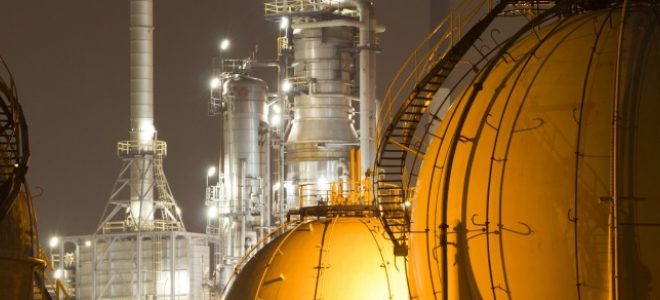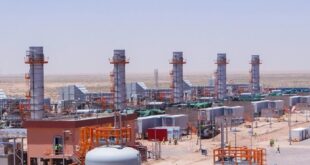The International Energy Agency (IEA). OPEC and the U.S. Energy Information Administration (EIA). have consistently and seriously underestimated U.S. oil production. and hence non-OPEC supply. since the Shale Oil Revolution took off in earnest early this decade.
Forecasters at these major oil organizations simply do not understand that we are in a new age of rapid technological advancement and innovation. This new age has been pushing down the cost of U.S. light tight oil (LTO) faster and lower than expected. expanding ultimate recoverable resource and so-called sweet spots. and pushing U.S. oil production – both crude and NGLs – substantially higher at lower than anticipated prices.
At the same time. this new technological age – the second machine age – is likely to lead to peak oil demand much sooner than predicted by the IEA. OPEC and EIA. with growth in global oil consumption to slow before a precipitous decline thereafter. None of these forecasters are predicting a peak prior to 2040 in their reference cases. although the IEA is at least projecting a significant slowdown in the rate of oil demand growth after 2025.
Land-based transportation currently accounts for almost half of global oil consumption. The internal combustion engine was undeniably the winner of the transportation derby in the 20th century. but it looks like electric vehicles are set to challenge that monopoly in the 21st century given rapid rates of technological advancement and rising concerns about urban air pollution and climate change.
The combination of weaker than projected global oil demand and stronger than expected LTO production – from the U.S. and elsewhere – could weigh heavily on crude oil prices by the middle of the next decade.
In contrast. the IEA and EIA are both predicting steady upward pressure on crude prices through 2040 based on projected market fundamentals. Both organizations see the price of a Brent-like crude averaging around US$110 per barrel at the end of the projection period in inflation adjusted terms – or almost a US$175 nominal price assuming inflation averages 2 percent per annum.
Second Machine Age
The U.S. Shale Revolution has often been compared to an industrial process. with companies constantly attempting to push the technological envelope to produce greater quantities from lesser quality resources at lower costs. But the combination of horizontal drilling and hydrofracking was just the beginning for the industry.
In their 2014 book The Second Machine Age. MIT professors Erik Brynjolfsson and Andrew McAfee convincingly argued that we are at a second inflection point in terms of human progress that is supercharging technological advancement and innovation already propelled by the Industrial Revolution. leading to even greater productivity improvements than in the past. They wrote:
Now comes the second machine age. Computers and other digital advances are doing for mental power – the ability to use our brains to understand and shape our environment – what the steam engine and its descendants did for muscle power. They`re allowing us to blow past previous limitations and taking us into new territory.
Two major examples that Brynjilfsson and McAfee gave to support their second machine age thesis were autonomous vehicles and artificial intelligence. Both appeared distant possibilities. if not pipe dreams. early last decade. But due to incredibly rapid technological progress in recent years they are both now on the verge of commercialization – and with relatively rudimentary versions of each already commercialized.
In fact. the two authors could have provided the U.S. Shale Revolution as a third. and more advanced and impactful example of their second machine age.
Shale Oil Revolution
The core reason the IEA. OPEC and EIA have tended to underestimate U.S. oil production growth again and again is because they assume the cost of production will climb over time as producers burn through prime drilling targets and the amount of recoverable oil declines.
But this sort of thinking is more suited to the Industrial Revolution than the second machine age and will continue to be wrong for the U.S. in the foreseeable future. The Shale Oil Revolution will then likely spread to other jurisdictions such as Argentina and Canada as they overcome their above ground issues.
The average breakeven wellhead price per barrel for U.S. LTO production was cut almost in half to US$35 per barrel over the 2014-16 downturn – add roughly US$12 for overhead and interest charges. return on investment and transportation cost to market to calculate breakeven market price – based on producer survey data by oil and gas consultancy Rystad Energy.
At the time. only about half of the cost decline tended to be attributed to structural factors. including rapid technological and operational improvements such as walking rigs. intelligent drill bits and predictive underground analytics.
But improvements in LTO rig productivity have been truly second machine age-like since 2007. For example. the average monthly growth rate in crude production per rig in U.S. LTO basins grew at a rate of 2.7 percent per month between January 2007 and August 2016. This incredible rate of productivity improvement led average monthly crude production for a rig in these areas to skyrocket from 36 b d to 749 b d over this period.
After a productivity reversal from September 2016 to July 2017. as the rig count more than doubled to over 800 and production per rig declined an average of 2.2 percent per month to 586 b d. productivity has since rebounded 0.6 percent per month to 668 b d despite significant infrastructure constraints retarding production from the massive Permian Basin.
These productivity improvements were gradually bringing down breakeven prices even before the 2014 oil price collapse. and this was despite frenetic activity in the industry. and have been countering rising cyclical costs in the U.S. LTO patch since the industry rebounded in 2017.
As of now. even the IEA indirectly acknowledges this to be the case. despite failing to translate this factor into either their medium or long-term outlook for U.S. oil production. The agency wrote in Oil 2018: “Companies maintain that a significant share of the cost deflation seen over the past four years is structural and here to stay due to great efforts to improve operational efficiency. including digitalization.“
And as more digitized drilling information becomes available we will continue to see both an expansion of overall technically recoverable resource and sweet spots in major LTO basins due to improved drilling plans.
For example. the EIA has had to ramp up its assessment of technically recoverable U.S. crude oil resource (TRR) each year this decade on the back of rapidly rising LTO resource. a trend that is likely to continue for the foreseeable future. Between the beginning of 2008 and 2017 – with the January 2017 estimate from Annual Energy Outlook 2019 – the EIA has increased its TRR estimate for U.S. crude oil by 105 billion barrels to 303 billion barrels. despite the U.S. producing 23 billion barrels of crude in the interim.
The EIA did not release a formal TRR estimate for LTO early in this period. given the newness of the Shale Oil Revolution. but LTO appears to have contributed to most. if not all. of the increase in total crude oil resource. LTO resource accounted for 113 billion barrels of the 2017 estimate. more than a third of the total. with 48 billion barrels of that located in the prolific. low-cost Permian Basin.
Road Transportation Revolution
Forecasts for electric vehicle (EV) sales have increased substantially across the board over the past few years as the industry gains traction. but as previously mentioned the IEA. OPEC and EIA are still not expecting global oil consumption to peak until sometime after 2040.
The primary driver for rising expectations for light-duty EV sales is the rapid improvement in lithium-ion batteries in terms of safety. energy density. and price. Batteries currently account for almost half the price of a US$40.000 vehicle. The price of lithium-ion batteries has fallen 85 percent to US$176 per kWh between 2010 and 2018. and Bloomberg New Energy Finance (BNEF) is now forecasting it to drop below the magical US$100 kWh level by 2024 – making EVs price competitive with conventional vehicles at the point of purchase.
But the projected annual cost decline for lithium-ion batteries by BNEF is below the standard 15% to 21% range for annual price improvements for rapidly rising mass-produced products since the beginning of the Industrial Revolution. partly due to concerns that supply constraints of lithium. cobalt and graphite will retard price reductions for rechargeable batteries.
On the other hand. with most of the world’s leading automakers and electronics companies spending heavily on battery R&.D. as well as numerous smaller companies. lithium-ion batteries could “blow past“ Industrial Age levels of price reductions. For example. in November 2017. the research arm of Samsung Electronics announced that it had developed a “graphene ball“ that increases the capacity of lithium-ion batteries by 45% and charging speed by five times.
In addition. Massachusetts-based Ionic Materials has developed a polymer electrolyte that has the potential of replacing the flammable liquid electrolyte presently found in most lithium-ion batteries. This makes them safer. provides substantially higher energy densities at lower cost. and requires less metal per battery. Ionic’s polymer in effect turns lithium-ion batteries into solid-state ones. with the safety and performance benefits of the latter.
The polymer electrolyte also allows the batteries to use pure lithium rather than lithium ions. potentially improving energy densities by five to ten times – drastically cutting charging frequency and massively increasing driving range. Bill Joy. tech guru and a co-founder of Sun Microsystems. and one of the major investors in Ionic Materials. says the company’s revolutionary new technology should be ready for market by early next decade.
And this has wider implications than just the sale of more light-duty EVs. To date. it has been widely assumed that EVs would make significant inroads into the light-duty market before the heavy-duty vehicle segment since most of the world’s biggest automakers have already made a strategic decision to go electric – especially since Volkswagen’s diesel disaster.
But if batteries are substantially cheaper. safer and more efficient sooner than generally expected. the opposite could be the case. Moreover. it is heavy-duty transport that is expected to account for most of the growth in oil demand for road transport in coming years by the IEA. OPEC and EIA.
Peter Tertzakian. best-selling author and chief energy economist with Calgary-based ARC Financial. argues that trucking companies tend to be profit-maximizing organizations that attempt to make rational purchase decisions based on the economic viability of various options. The threat of becoming uncompetitive. and thereby the potential of outright bankruptcy. is a powerful force that means faster uptake of new products and processes.
As a historical analogy. Tertzakian cites the transition from coal-fired steam boilers to petroleum-powered diesel engines for railroad locomotives. The near 100% transition of the former for the latter was fast. roughly 30 years. from the 1940s to the early 1970s. with the rate of diesel locomotive adoption following the typical S-shape pattern.
In contrast. Tertzakian argues that personal transport choices have long been incompatible with making good financial decisions. For example. individual purchasers of automobiles are often motivated by vanity and convenience. and as a result may purchase more automobiles than they truly need to look impressive to their friends and neighbors. or to allow them to conveniently haul home a sheet of plywood. twice a year.
As a result. global oil consumption could easily peak by the second half of next decade. while the following decline should be steep. with almost half of its market under threat from electric propulsion. The exact timing and level of the peak are uncertain though. especially with two important factors for global oil consumption still major question marks – the rate of economic growth and government policies impacting transportation and other sectors.
To conclude. crude oil prices have the potential of being significantly lower than predicted by the major oil forecasting organizations due to the second machine age – and barring large and sustained supply disruptions in a geopolitically-charged world.
Rather than steady upward pressure on crude prices through 2040. we are much more likely to see steady downward pressure post-2025 as global oil consumption goes into reverse and non-OPEC supply is pushed higher by greater than expected LTO production in the U.S.. Canada. Argentina and potentially elsewhere. By 2040. the price of Brent-like crude could drop back into a US$55-$65 per barrel range. in nominal. not inflation adjusted terms. roughly a third the price currently predicted by the IEA and EIA.
 Iran Energy News Oil, Gas, Petrochemical and Energy Field Specialized Channel
Iran Energy News Oil, Gas, Petrochemical and Energy Field Specialized Channel




